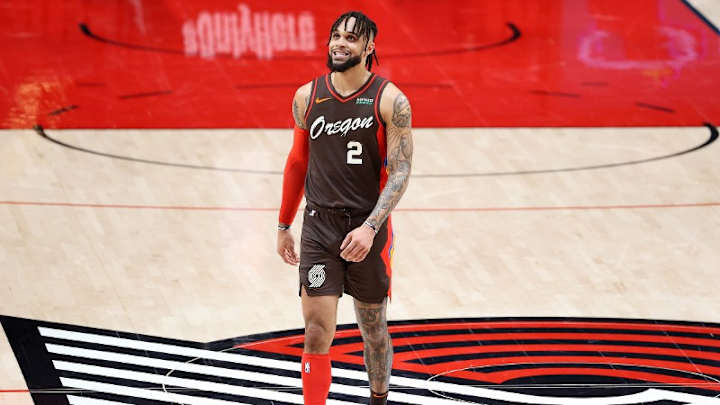Why Gary Trent Jr.'s Cold Shooting Streak Is Bound To End

Bad as it is, the box score was still a bit kinder to Gary Trent Jr. than his actual play against the Phoenix Suns warranted. His last of four three-pointers came in the game's final seconds with the outcome already decided, helping Trent avoid the ugly look of finishing with more shot attempts than points.
At least he'd have grown used to the disappointment by now, though. Trent failed to score more points than shots in five of the Trail Blazers' previous six games entering Thursday's action. In the seventh, he managed 16 points on as many field goal attempts.
Portland's relative struggles of late, at least compared to early February, might be most simply explained by Trent's individual ones. He's averaging 15.0 points on 15.5 field goal attempts in the Blazers' last eight games, shooting 36.3 percent overall and 29.2 percent from beyond the arc on sky-high volume.
Fearless shooters are ever susceptible to make-or-miss foibles in the modern NBA, and that's especially true for Trent as he's shouldered a heavier offensive load during C.J. McCollum's absence. Damian Lillard can only run so many ball screens and shoot so many pull-up threes.
Someone has needed to take those tough shots for Portland other than Lillard over the past two months, and Trent's been the player most frequently doing so – a shift in mentality that happens to align with his score-first preferences.
All that extra self-created offense seemed like evidence of Trent's mini leap when his jumper was falling. It's not right now, at least to the extent it was previously. But a deeper dive into the numbers reveals that Trent's labors are more nuanced – and at least potentially more fleeting – than basic stats make them seem.
Trent has connected on just 16.7 percent of his pull-up tries from deep over the last eight games, per NBA.com/stats, going a bleh 5-of-30. His mark on catch-and-shoot three-pointers during that timeframe, though? A perfectly fine 38.1 percent.
We know by now that Trent is a borderline elite spot-up three-point shooter. He shot 41.5 percent on those attempts last season, and is even better in 2020-21 despite this relative cold streak. Regression to the mean is coming.
The question is just how much of that inevitable balancing out will apply to Trent as an off-dribble long-range shooter. He'll be much better than sub-20 percent on pull-up threes going forward, surely, but his scorching stretch shortly after McCollum went down could well prove unsustainable. It's fair to expect Trent will eventually get more consistent, too. The small sample size can't be overlooked here.
The good news for Portland is that much of this is moot. When McCollum returns, Trent is bound to take not just more open shots, but easier ones. With another dynamic ball handler next to him, there just won't be near as much of a need for Trent to step outside his current comfort zone as an off-dribble three-point shooter.
How successful he is when doing so could be an X factor on the Blazers' path toward the playoffs and beyond.
